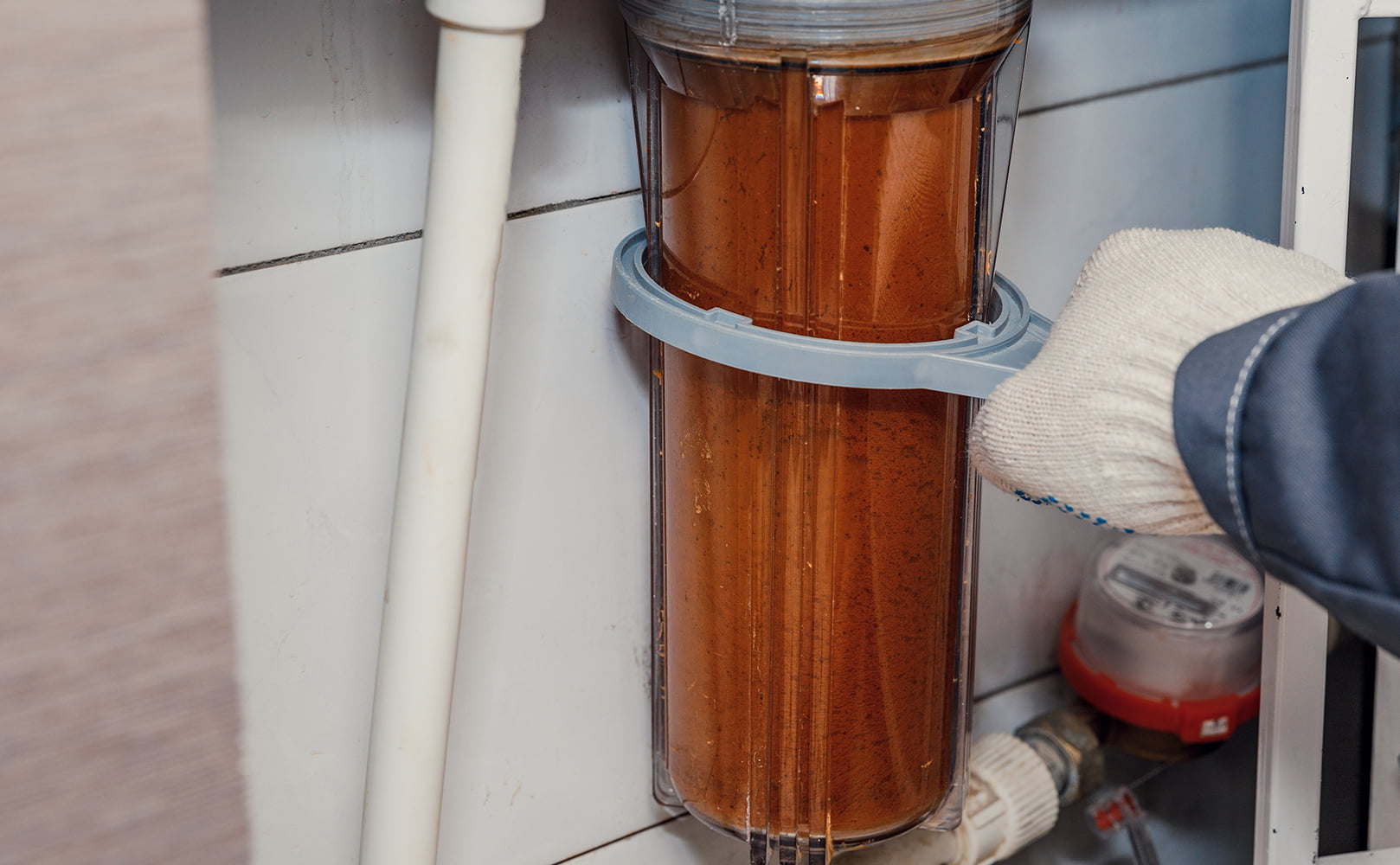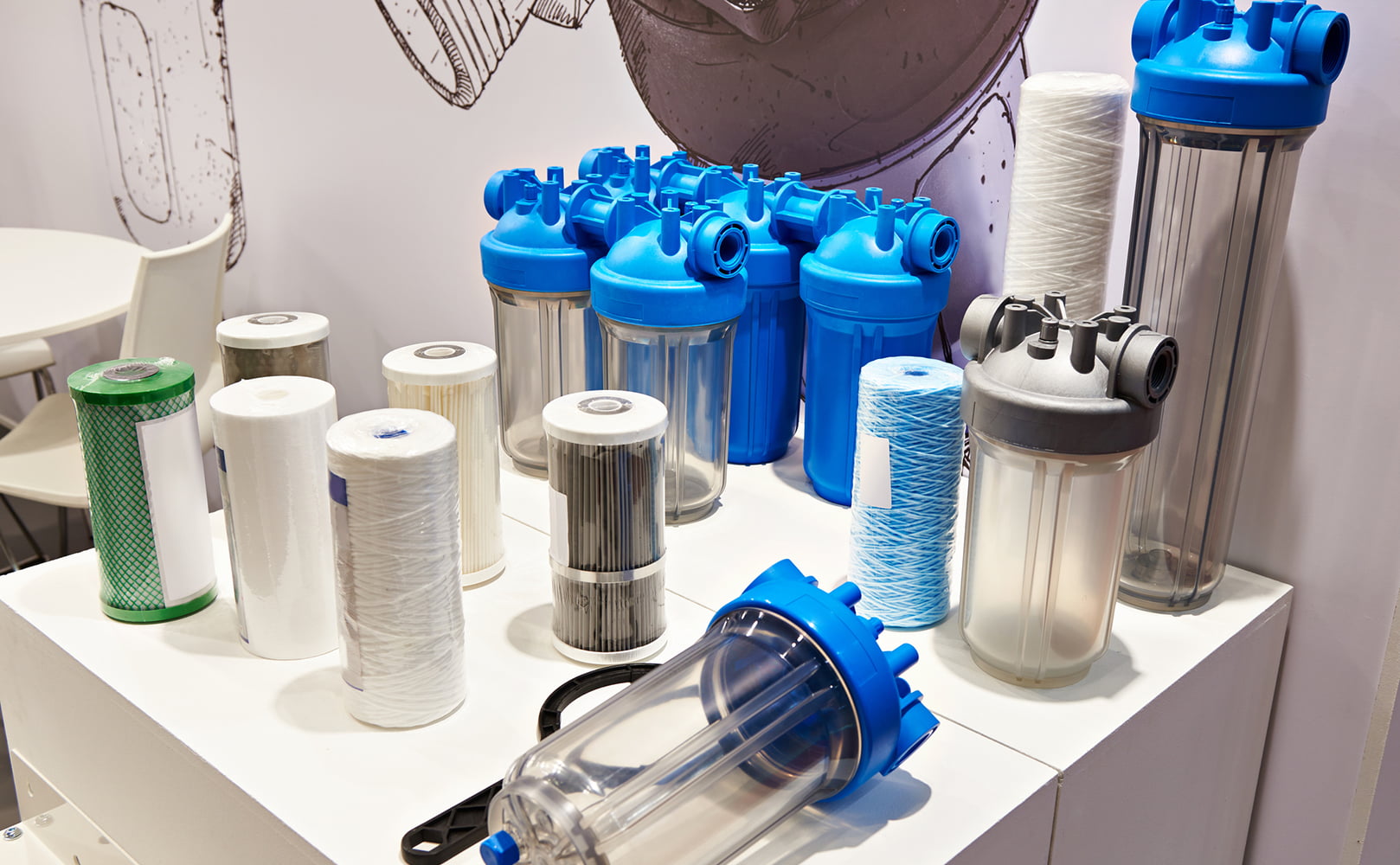How to Check a Sediment Filter | A to Z Guide
Written by: Gene Fitzgerald // Last Updated: Aug 22, 2023
This page may contain affiliate links. If you buy a product or service through such a link we earn a commission at no extra cost to you. Learn more.
Sediment filters need regular maintenance to stay in good shape. For one, you’ll need to check the filter cartridge to see if it needs cleaning or replacement.
If you’re not sure how to check your sediment filter, we’re here to help.
This article will show you how to check a sediment water filter and how often you should replace it.
Key Takeaways
You can check a sediment filter by:
- Looking through the transparent filter housing. Is it dirty?
- Removing the filter housing if it is opaque
- Verifying if there’s a drop in water pressure after the filter
- Observing the filtered water’s taste and smell
How to Check a Sediment Water Filter
Here’s how you can check a sediment water filter in different situations.
Transparent Filter Housing
If your sediment filter housing is transparent, you don’t need to turn off the water before checking. Instead, simply look through the transparent casing and see if the sediment filter cartridge looks dirty.
If it does indeed look very dirty and clogged, you should clean or replace the filter.
Non-Transparent Filter Housing
If you cannot see through the filter housing, you’ll have to remove the housing to check. To do that, you’ll first turn off the water supply and turn on all nearby taps to flush the remaining water out. Then, you disconnect the filter housing.
Filters With Pressure Valves
If you have installed pressure valves with your water filter, you can observe pressure before and after the filter.
If the water pressure drops drastically after passing through the filter, it means that the filter is clogged and needs cleaning or replacement.
If you also notice that the water pressure from your faucets has reduced, it could be that the sediment filter needs maintenance.
Bad Taste and Odor
When you observe an unpleasant smell coming from your sediment filter, it’s a sign that you need to change it and clean the filter housing.
Also, if your water suddenly smells or tastes bad, it could be that your sediment filter is due for replacement.
How Often Should I Replace My Sediment Filter
How often you should replace your sediment filter depends on how much water you use, your water’s quality, your filter type, and your filter’s micron rating.
How Much Water Are You Using?
If you use a lot of water at home, your sediment filter will get clogged quickly, and you’ll have to replace it more often.
Type of Filter + Micron Rating
Different sediment filters have different life expectancies. Cartridge-based filters, for example, usually last 3-12 months before you must change them. On the other hand, backwashing sediment filters last multiple years, while spin-down filters don’t ever need replacement as long as you clean them regularly.
There’s also the micron rating. It determines the size of contaminants that a sediment filter can remove. Filters with bigger micron ratings remove fewer contaminants, so they take a while before they become clogged and need replacement. For smaller micron ratings, you’ll need to replace the filter more often due to more contaminants being trapped.
Water Quality
If your water contains a lot of particles and sediments, a filter will get clogged easily, and you’ll need to change it frequently. But if your water contains fewer impurities, you can use it for longer.
How Do Sediment Filters Work, and What Do They Remove?
Sediment filters are designed to remove solid particles from water. They use mechanical filtration to trap floating bits and pieces while clean water passes through.
Depending on their type, sediment filters also remove different types of contaminants:
Pleated Filters
Pleated filters are made of fine sheets of polyester (or similar material).
The sheets are folded in pleats so they have a wide surface area and can block more particles. They are most appropriate for removing large-sized dirt like coarse sand.
Pleated filters can be washed and reused, so they help save replacement costs.
Melt-Blown (Spun) Filters
Melt-blown filters are made up of complex fiber layers that can trap a wide range of sediment.
Besides, they use a depth gradient to filter water. That means that the filter pore size gets smaller as the water flows to the center where smaller particles are being trapped.
Many melt-blown filters can remove particles smaller than 10 microns in size.
String-Wound Filters
String-wound filters work like melt-blown filters, filtering smaller water particles as water flows through to the core.
However, string-wound sediment filters are made of firmly wrapped cotton, polypropylene, or polyester.
They are great for removing tiny particles.
Bag Filters
These are polymer-made bags that filter water through tiny pores. They come in different types, designs, and pore sizes.
Bag filters can remove a wide range of water contaminants. The water passes through the bag, while particles are trapped inside.
Besides being used as water filters, bag filters can also be used to process paints, resins, and chemicals.
Spin-Down Filters
Spin-down filters work by swirling water in a fast motion and using gravity to separate particles.
They are very effective for large particles like sand.
However, you’ll need to maintain spin-down filters regularly, especially if your water contains a lot of debris.
Backwashing Filters
Backwashing sediment filters last very long since they wash out trapped contaminants instead of storing them.
If you have any questions about how to check sediment filters please don’t hesitate to leave a comment below!
Information provided on BOS is for educational purposes only. The products and services we review may not be right for your individual circumstances.
We adhere to strict editorial guidelines. Rest assured, the opinions expressed have not been provided, reviewed, or otherwise endorsed by our partners – they are unbiased, independent, and the author’s alone. Our licensed experts fact-check all content for accuracy. It is accurate as of the date posted and to the best of our knowledge.



